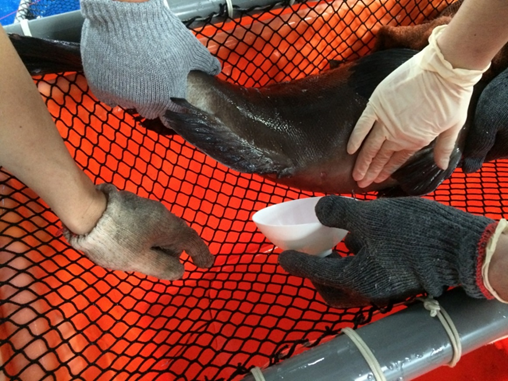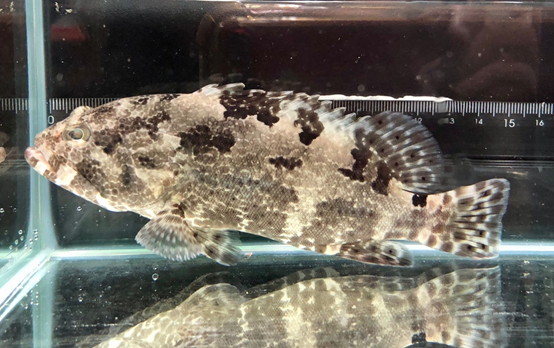Insufficient sources of male groupers are a bottleneck for the mass production of grouper fingerlings. In order to overcome the shortage of male fish, the Fisheries Research Institute of the Council of Agriculture has successfully developed ultra-low temperature cryopreservation technology for grouper semen to carry out artificial insemination experiments after the semen has been thawed. The results showed that the vitality of the sperm is not significantly different from that of fresh sperm, with the fertilization rate and hatching rate both close to 90%. The tiger grouper bred using the cryopreserved semen were cultured for half a year and are growing stably at present.
According to the Fisheries Research Institute, the ultra-low temperature cryopreservation technology for fish semen has great application value in aquaculture breeding, fingerling conservation, and maintaining genetic diversity. Grouper is an economically important cultivated fish species in Taiwan, but it is difficult to obtain male fish in the process of production and reproduction due to its sexual transformation characteristics. In addition, the maturation of female and male brood stock is not synchronized, which often affects the mass production of fingerlings. In view of this, the Fisheries Research Institute is actively developing grouper semen cryopreservation technology, hoping to overcome the above-mentioned problems, strengthen the breeding research between groupers with different reproductive periods or geographically separated groups, lay the foundation for breed improvement and the cultivation of new breeds, and enhance the competitiveness of Taiwan's grouper farming industry.
The Fisheries Research Institute states that it has successfully established ultra-low temperature cryopreservation technology for the semen of Taiwan’s main farmed grouper species, such as giant grouper, tiger grouper, Malabar grouper, kelp bass, and potato grouper. The results of the actual reproduction test after thawing the frozen semen confirmed that its vitality is very close to that of fresh semen, with a fertilization rate and hatching rate of 90% and 87%, respectively. According to the Fisheries Research Institute, semen cryopreservation technology for other important economic fish and shellfish will continue to be established in the future, and it will be widely used in fingerling preservation, reproduction and breeding, to help the stable and long-term development of Taiwan's aquaculture industry.
Eastern Marine Biology Research Center, Fisheries Research Institute, Council of Agriculture

Figure 1. Collection of grouper semen

Figure 2. Tiger grouper cultivated after fertilization with ultra-low temperature semen cryopreservation